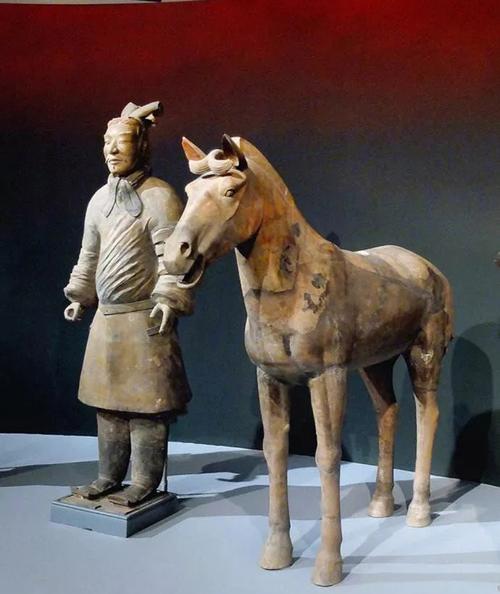
Are There Horses in the Terracotta Army?
The Terracotta Army is one of the most iconic archaeological discoveries of all time, a vast collection of life-sized terracotta figures buried with the first emperor of China, Qin Shi Huang, in the 3rd century BC. But what exactly makes up this incredible army? While the warriors themselves are the most famous component, the Terracotta Army is much more than just soldiers. It also includes horses, chariots, and a variety of other figures, all meticulously crafted to accompany the emperor into the afterlife.
Horses: An Integral Part of the Terracotta Army
Horses play a crucial role in the Terracotta Army, reflecting the importance of cavalry and chariots in ancient Chinese warfare. There are two main types of horses found in the pits:
-
Chariot Horses: These horses are slightly smaller than the cavalry horses and are depicted in teams of four, pulling the emperor's war chariots. The chariots themselves are marvels of ancient craftsmanship, complete with detailed bronze fittings and intricate decorations.
-
Cavalry Horses: Larger and more powerfully built than their chariot counterparts, these horses are depicted individually, ready to be ridden into battle. They showcase the strength and agility of the Qin Dynasty's cavalry.
The Scale and Significance of the Horse Figures
The sheer number of horse figures found in the Terracotta Army is staggering. While the exact number is unknown, estimates suggest that over 600 horse figures have been unearthed from the three main pits. Like the warriors, the horses are incredibly lifelike, with each one individually sculpted and displaying unique features and postures. This attention to detail highlights the skill of the artisans and the importance placed upon horses in Qin Dynasty military strategy.
The presence of horses in the Terracotta Army is significant for several reasons:
-
Military Might: Horses were essential for both warfare and transportation in ancient China, and their inclusion in the Terracotta Army emphasizes the military power of the Qin Dynasty.
-
Status Symbol: Horses, particularly high-quality steeds, were considered valuable assets and status symbols in ancient China. Their inclusion in the emperor's tomb reflects his wealth and power.
-
Afterlife Beliefs: The inclusion of horses, chariots, and warriors suggests a belief in an afterlife where the emperor would need a powerful army to protect him and maintain his rule.
FAQs
Q1: Are the horses in the Terracotta Army life-sized?
A1: Yes, just like the warriors, the horses are life-sized, showcasing the incredible skill and attention to detail of the artisans who created them.
Q2: What are the horses made of?
A2: The horses, like the rest of the Terracotta Army figures, are primarily made of terracotta, a type of earthenware clay.
Q3: Why were the horses buried with the emperor?
A3: The horses, along with the warriors, chariots, and other figures, were likely buried with the emperor to serve him in the afterlife, reflecting the ancient Chinese belief in a world beyond this one. They represent the emperor's power, wealth, and military might.